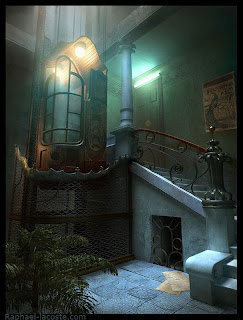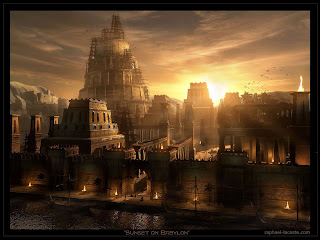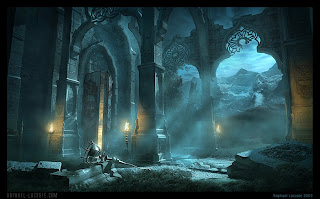Concept art
I’ve always aimed from the first year to implement at least one major 3d generated illustration project into one of the modules. Over the past 4-5 years I have been learning the software and now I’m relatively confident that I can use it to its full potential and be able to create a illustration of the quality to be placed in a portfolio.
Characters for me are difficult to create through 2 dimensional artistic techniques, creating them in 3 dimensions is 100x harder and takes a great deal of time (which wouldn’t suit the tight deadlines of the module).
3D Environmental Concepts.
Raphael Lacoste is an artist that always come to mind when I think about 3d environment concepts. In recent years he’s more of a matte painter than a 3d environment artist, but his work in the 2000-2007 was purely 3 dimensional environment concepts for videogames.



From looking at his environment concepts it is obvious there is a lack of characters, this leads to question whether these images are telling a story and in-turn are they illustrations at all? Personally I believe images such as these do tell a story and that a lack of characters doesn’t detract from that. When I see the bottom right image I can see a lot of things; what happened in to this building? What caused that lantern to fall and those stones to collapse on the roof? Was there a battle or a landslide from the mountain? These images make you imagine yourself what happened instead of giving everything on a silver platter, as a result everyone interprets the image differently.
Constraints of such a project
Time is the greatest constraint of this sort of project, 3d artwork often takes longer to create than 2d artwork for the simple reason that everything has to be created in 3 dimensions. As a result I may have to constrain the environment to be prominently manmade structure because authentic organic landscapes such as grass, foliage etc also takes a great deal of time.
Often in 3d art the final piece is just one flat render, and texture applied to most areas of the 3d object/environment isn’t even visible on the final render. So in a sense to save time I could only texture and model aspects that would be visible in the final rendered image.



















































